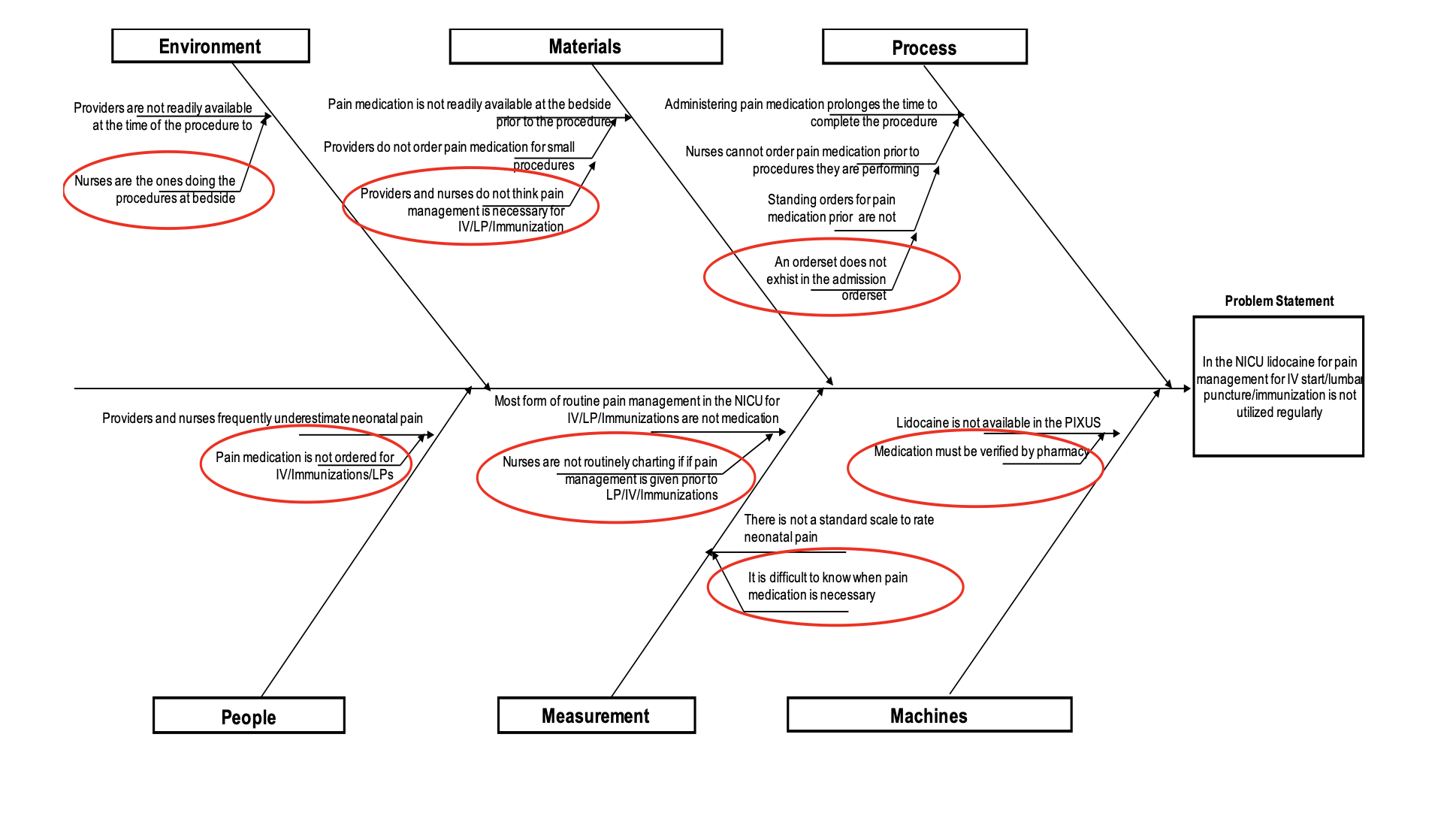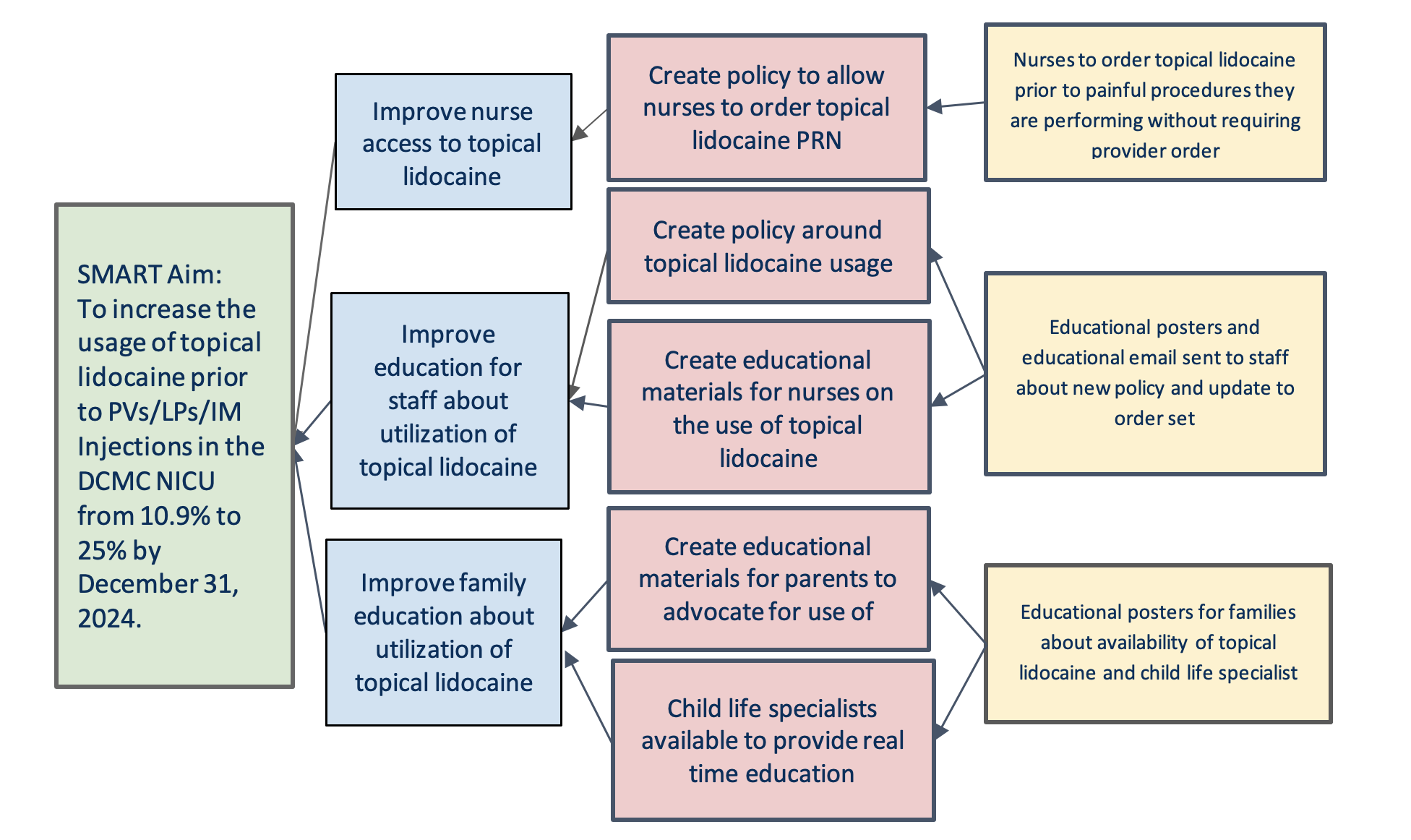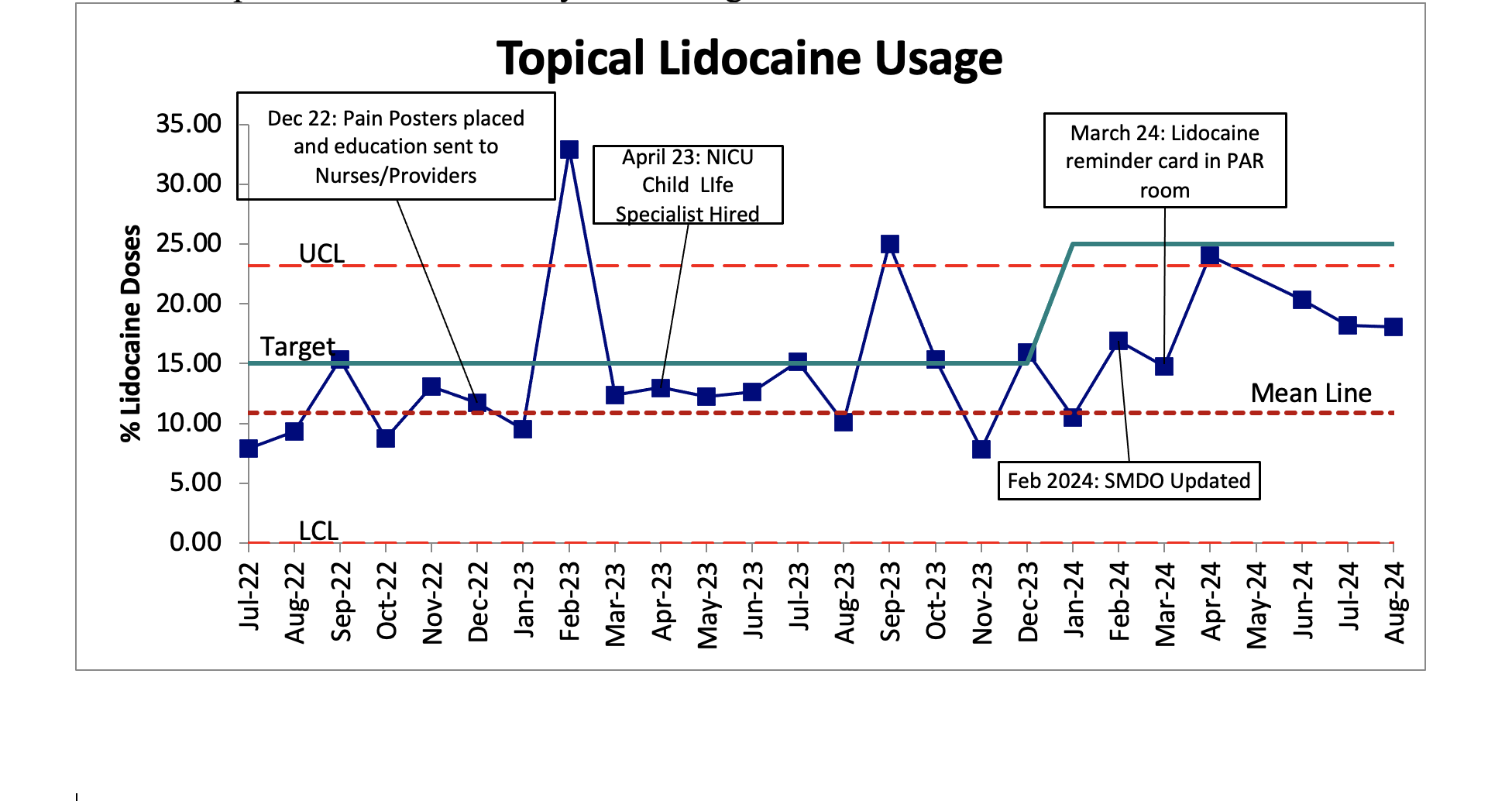Neonatal Quality Improvement 6
Session: Neonatal Quality Improvement 6
539 - More Comfort, Less Pain: A Quality Improvement Initiative to Increase Use of Topical LIdocaine in the NICU
Saturday, April 26, 2025
2:30pm - 4:45pm HST
Publication Number: 539.5998
Molly Pont, University of Texas at Austin Dell Medical School, Austin, TX, United States; Krystine Sandlin, Dell Children's Medical Center of Central Texas, Austin, TX, United States

Krystine Sandlin, MD (she/her/hers)
Neonatologist
Dell Children's Medical Center of Central Texas
Austin, Texas, United States
Presenting Author(s)
Background: The negative impact of pain on neonatal brain development is well documented, yet neonatal pain management lacks consistency and efficacy. Topical lidocaine (TL) is effective at reducing pain during procedures such as peripheral venipuncture (PV), intramuscular (IM) injection, and lumbar puncture (LP). Using TL to decrease neonatal pain is part of our overall bundle of neuroprotective strategies.
Objective: Our SMART aim was to increase TL use in the Dell Children’s Level 4 NICU for specific painful procedures (PVs, IM injections, and LPs), from a baseline of 10.9% from July-November 2022, to 15% by December 31, 2023. Upon successfully meeting this goal, our updated SMART aim is to increase TL usage 25% by December 31, 2024.
Design/Methods: We collected baseline data on TL use prior to PVs, IM injections, and LPs in the DCMC NICU from July-November 2022. We created a stakeholder analysis, utilized a fishbone diagram to perform a root cause analysis (Figure 1), and created a key driver diagram to map our interventions (Figure 2). We implemented iterative Plan-Do-Study-Act (PDSA) cycles and collected monthly data on TL use rates from December 2022 to December 2024.
Results: Our first PDSA cycle (December 2022-March 2023), we distributed “More Comfort, Less Pain” posters in patient rooms to educate nurses and families about using TL prior to painful procedures. We also implemented a new policy for nurse-driven use of existing TL order set. In our second PDSA cycle (April 2023-December 2023), a Child Life Specialist was hired with emphasis on encouraging nurses to use TL prior to painful procedures. In the third PDSA cycle (January 2024-present), we updated our order set to specifically include PVs and IM injections as indications for utilization. We then placed TL reminder cards in the supply room, close to PV and IM injection supplies. See results in Chart 1.
Conclusion(s): We reached our goal by December 2023. We updated our SMART aim and continued our PDSA cycles into 2024. We currently have a sustained trend above the mean from our baseline data, indicating a statistically significant improvement in TL usage. We will continue to track data and implement PDSA cycles to work toward our updated goal of 25% usage of TL. During data collection of baseline TL use, we learned that NICU providers and nurses used TL frequently for LPs, but did not routinely consider using it before PVs or IM injections because it was considered unnecessary and time consuming. The perceived barrier of increased time for TL use prior to procedures was a challenge for this QI project.
Figure 1: Fishbone Diagram
 Root cause analysis for usage of topical lidocaine.
Root cause analysis for usage of topical lidocaine.Figure 2: Key Driver Diagram
 Driver Diagram used to plan interventions.
Driver Diagram used to plan interventions. Chart 1: Topical Lidocaine Use July 2022 - August 2024
 Control Chart tracking percent usage of topical lidocaine.
Control Chart tracking percent usage of topical lidocaine.

